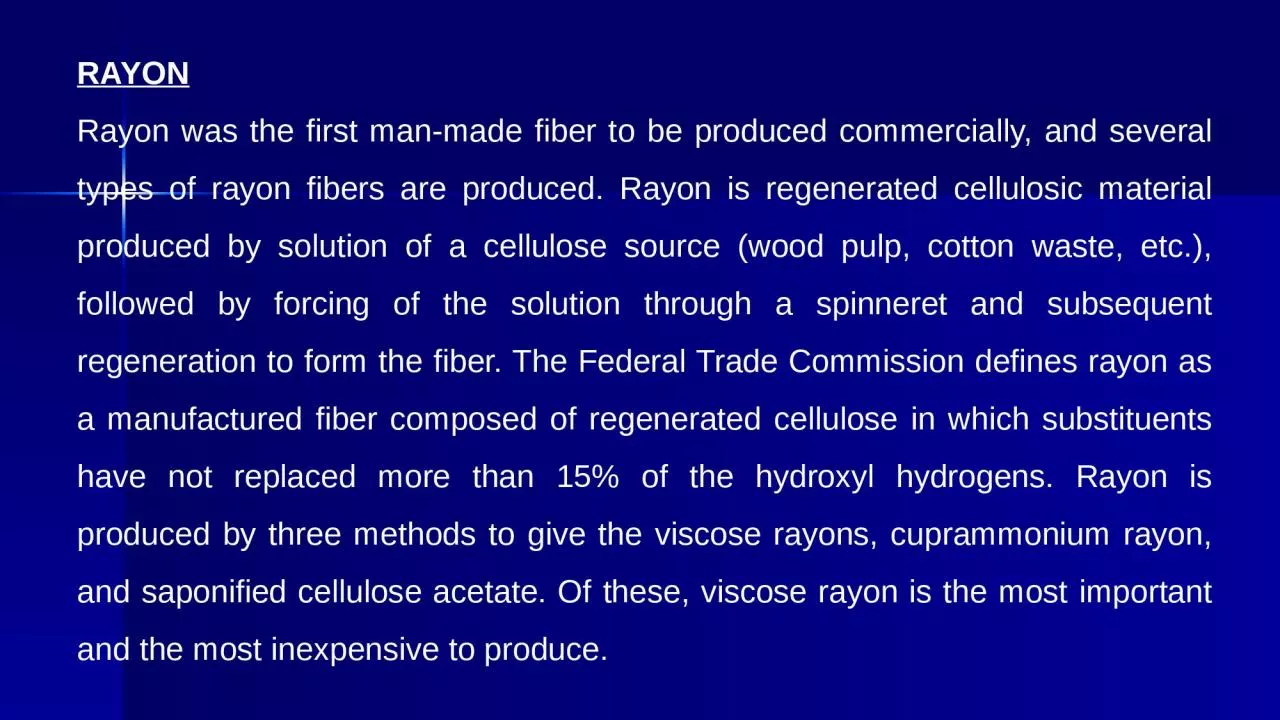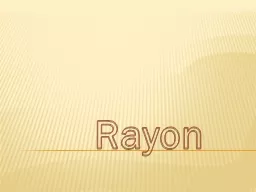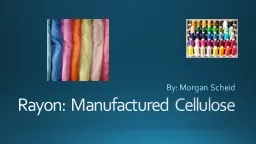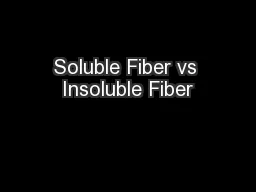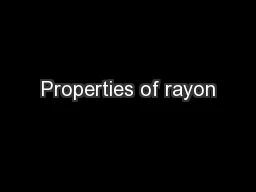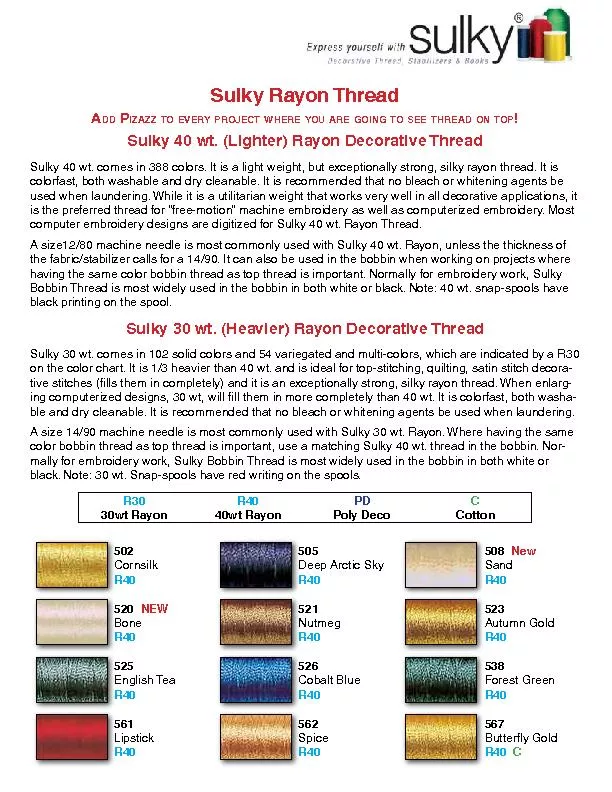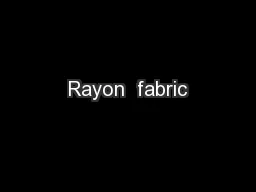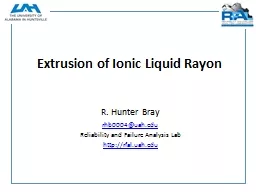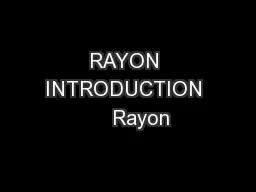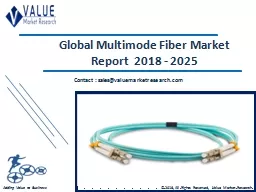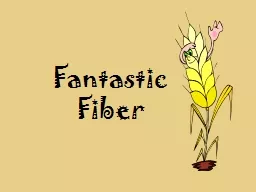PPT-RAYON Rayon was the first man-made fiber to be produced commercially, and several types
Author : hadly | Published Date : 2023-11-17
rayons cuprammonium rayon and saponified cellulose acetate Of these viscose rayon is the most important and the most inexpensive to produce Structural Properties
Presentation Embed Code
Download Presentation
Download Presentation The PPT/PDF document "RAYON Rayon was the first man-made fiber..." is the property of its rightful owner. Permission is granted to download and print the materials on this website for personal, non-commercial use only, and to display it on your personal computer provided you do not modify the materials and that you retain all copyright notices contained in the materials. By downloading content from our website, you accept the terms of this agreement.
RAYON Rayon was the first man-made fiber to be produced commercially, and several types: Transcript
Download Rules Of Document
"RAYON Rayon was the first man-made fiber to be produced commercially, and several types"The content belongs to its owner. You may download and print it for personal use, without modification, and keep all copyright notices. By downloading, you agree to these terms.
Related Documents

